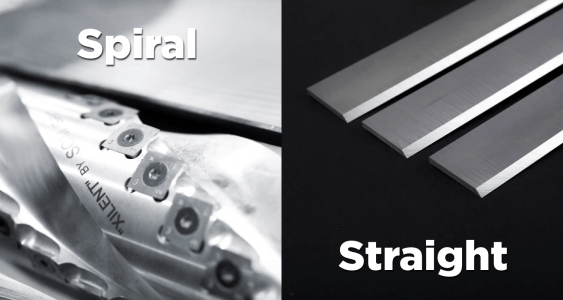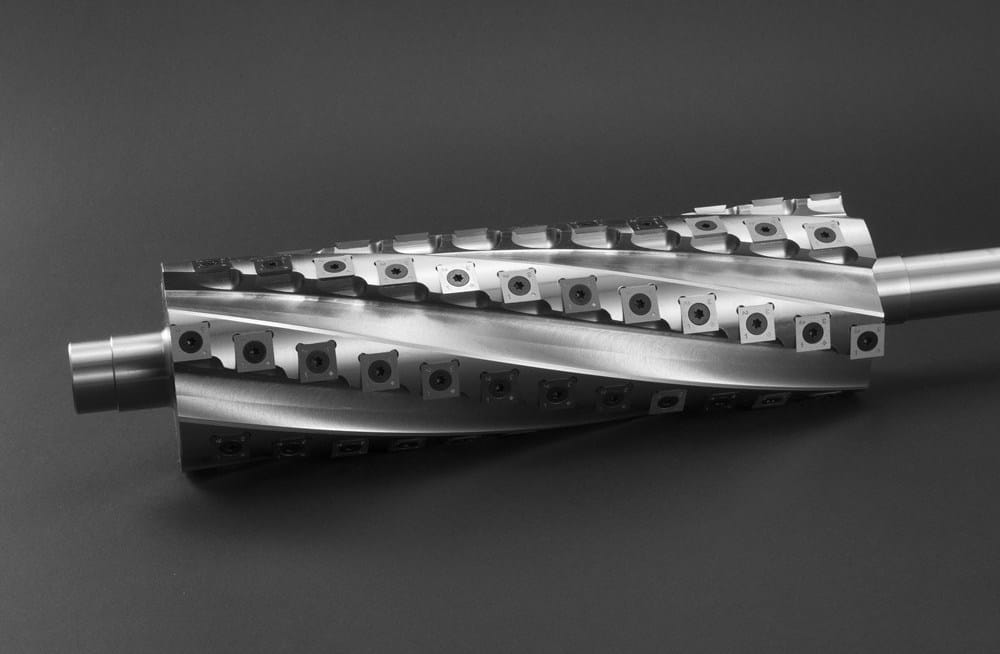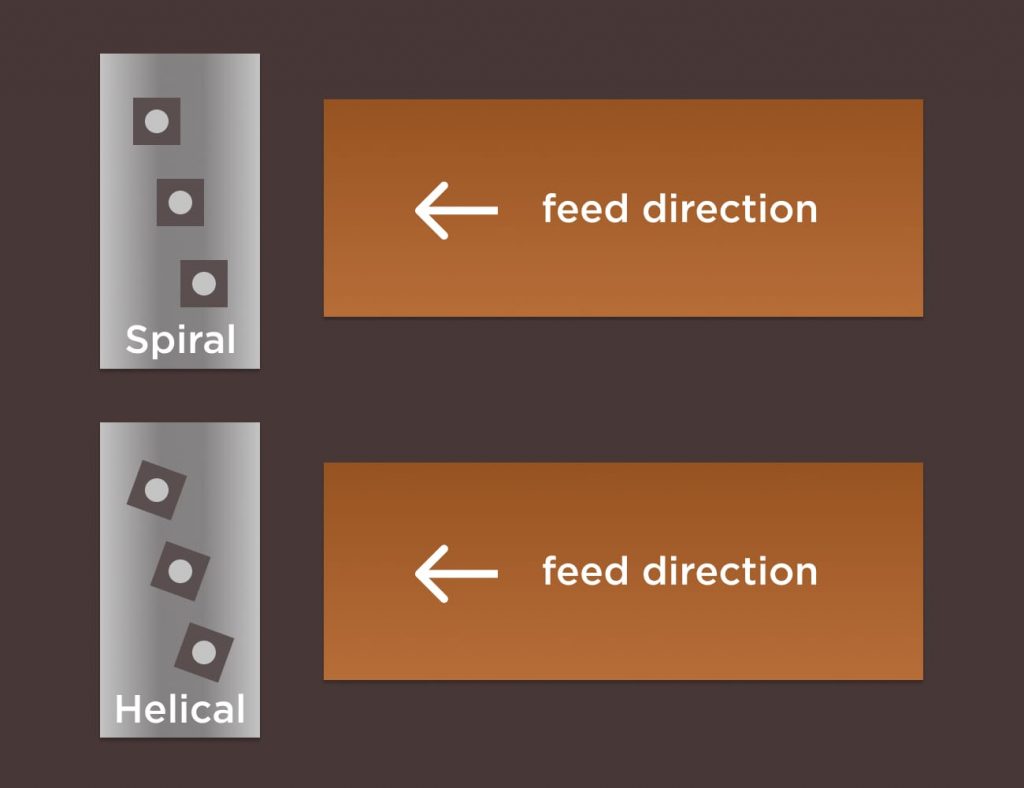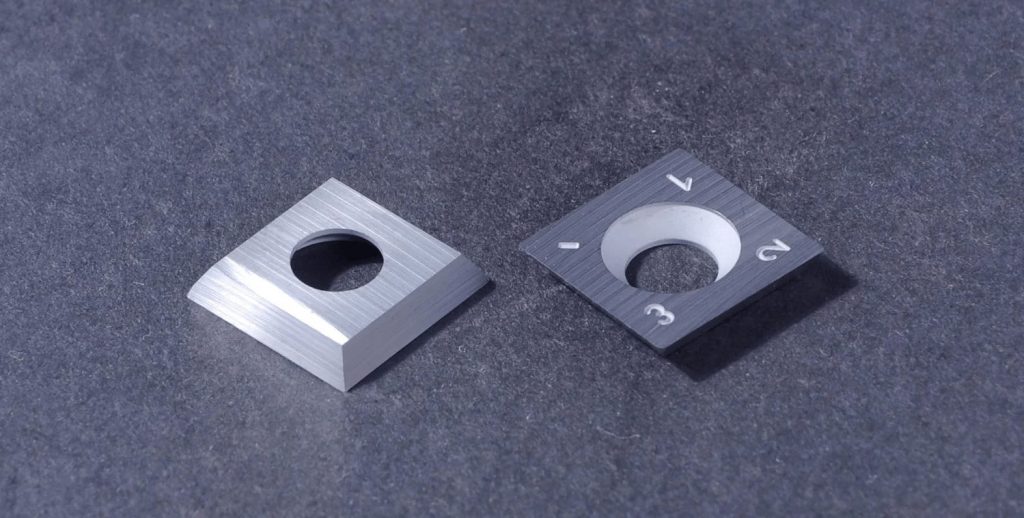There is a lot of hype around spiral cutters, but what are their benefits? And are they worth the extra cost?

If you’ve been following the evolution of jointers and planers, you might have noticed that there are more and more machines available nowadays with spiral cutters. These machines are often significantly more expensive. On the low side, spiral cutter upgrades will cost you at least $300 more, and often way more than that.
If the price increase is so steep, the upgrade better be worth it. But what benefits do spiral cutterheads actually have over standard straight blades? In this article I’ll explain what makes spiral cutters special, and try to help you decide if they’re worth the upgrade.

Let me first try to get the terminology straight. There’s several terms that are used interchangeably, but are not 100% the same thing. The cutterhead or cutterblock is the rotating metal cilinder in which the blades (also called knives) are placed. Traditional jointers and planers have a set of straight blades, usually two or three. These blades are similar to the blades you find in hand planes, except much wider and shorter.
The new spiral cutterheads have many small, individual blades that are positioned in a spiral shape around the cutterhead. This type of cutterhead is sometimes also referred to as an helical cutterhead (or helical head for short), especially in North America. Helical heads are also referred to as shelix cutterheads, which is actually a specific brand by Byrd tool, but which is often used interchangeably with the term helical head.
Helical heads and spiral cutterheads are almost exactly the same thing, except that in the case of helical heads, the blades are positioned at an angle. On ‘normal’ spiral cutterheads, the blades are positioned perpendicular to the workpiece. I’ve made an illustration to show the difference, which you can see below.
You can compare this to how you can position a hand plane in a skew position, which sometimes helps overcome resistance in the wood.

In practice this doesn’t make a huge difference, and to confuse things even more, some manufacturers use the term spiral, when they actually have a helical head, like Felder’s Silent Power cutterhead.
Long story short: In general, you can treat the terms helical head, helical cutterhead, shelix cutterhead, and spiral cutterhead or cutterblock all as identical. They all have specific individual cutters, laid out in a spiral pattern over the cutterblock.
There are several benefits to this spiral design. For starters, spiral cutterheads are noticeably quieter than normal blades. For example, Felder claims a 10 decibel (50%) reduction in noise with their spiral blades (that’s why they call them Silent Power blades), while SCM claims a 13 dB reduction with their Xylent cutters. Check out the video below for a detailed noise comparison test by Felder.
A second benefit is that it is much easier to set up your blades correctly. Setting up traditional planer blades is a very fiddly process. Spiral cutters cannot be resharpened and cannot be adjusted. They are simply screwed tight, and automatically stay in the correct position. This means that replacing a blade is as simple as removing and tightening a single screw.
This brings me to the third benefit, which is blade life. Each spiral cutter insert has four sharp edges, carbide tipped. Carbide tipped blades stay sharp for much longer than ‘normal’ HSS blades. And when they get dull, you can simply rotate them a quarter turn, and use the next sharp side. So you get longer lasting blades and they can be used four times. This leads to a way longer blade life overall.
An additional benefit is that if you damage a blade, for example by hitting a nail in the wood, you only have to remove one cutter instead of the entire blade. This is a significant cost saving.

In addition to these quality of life benefits, spiral cutters also deliver better planing results. They are better at dealing with difficult grains, reduce chance of tearout, and generally leave a better finish. This is because the blades are continuously in contact with the wood in rapid succession, rather than there being a gap between the time each blade hits the wood.
Two other minor advantages are (potential) reduced power consumption due to the blades moving more easily through the material, and smaller shavings which are easier to extract for your dust extraction system.
Ultimately I’d say there are only two downsides to spiral cutterheads. The first is that the blades cannot be resharpened, and if they’re dull you’ll have to buy new ones. But I think the longer blade life more than makes up for this.
The other downside is the price. Spiral cutterheads are simply much more expensive than normal blades. However, if you add up the costs of replacing and resharpening blades, and the time spent on fiddling with blade adjustment, I think spiral cutterheads are actually cheaper in the long term. So if you’re planning to use your jointer, planer, or combo for many years, getting a spiral cutterhead might not just be the better option in terms of quality and convenience, but also in terms of price.
All in all, I think spiral cutterheads are an extremely attractive upgrade. If you’ve got the budget for it, it’s almost a no brainer. Straight blades will perform quite well too – they have done for the past 100 years. But the benefits are many, and there are practically no downsides, so upgrading to a spiral cutterhead deserves a strong recommendation.
In our database you can search for machines that offer spiral cutterhead upgrades. Click here to browse them. This list includes benchtop planers, jointers, jointer planer combos, and large combination machines.
There are also several companies that offer aftermarket spiral cutterheads that you can fit to your machines yourself. I’ve listed a few of the major players below:
© Machine Atlas 2026
This article is very informative and useful. I am getting ready to purchase a planer and this article helped me decide to invest in a spiral cutting planer. As a new user, I greatly appreciate the information.
Hi Nancy, glad to hear you found it useful. Robbert